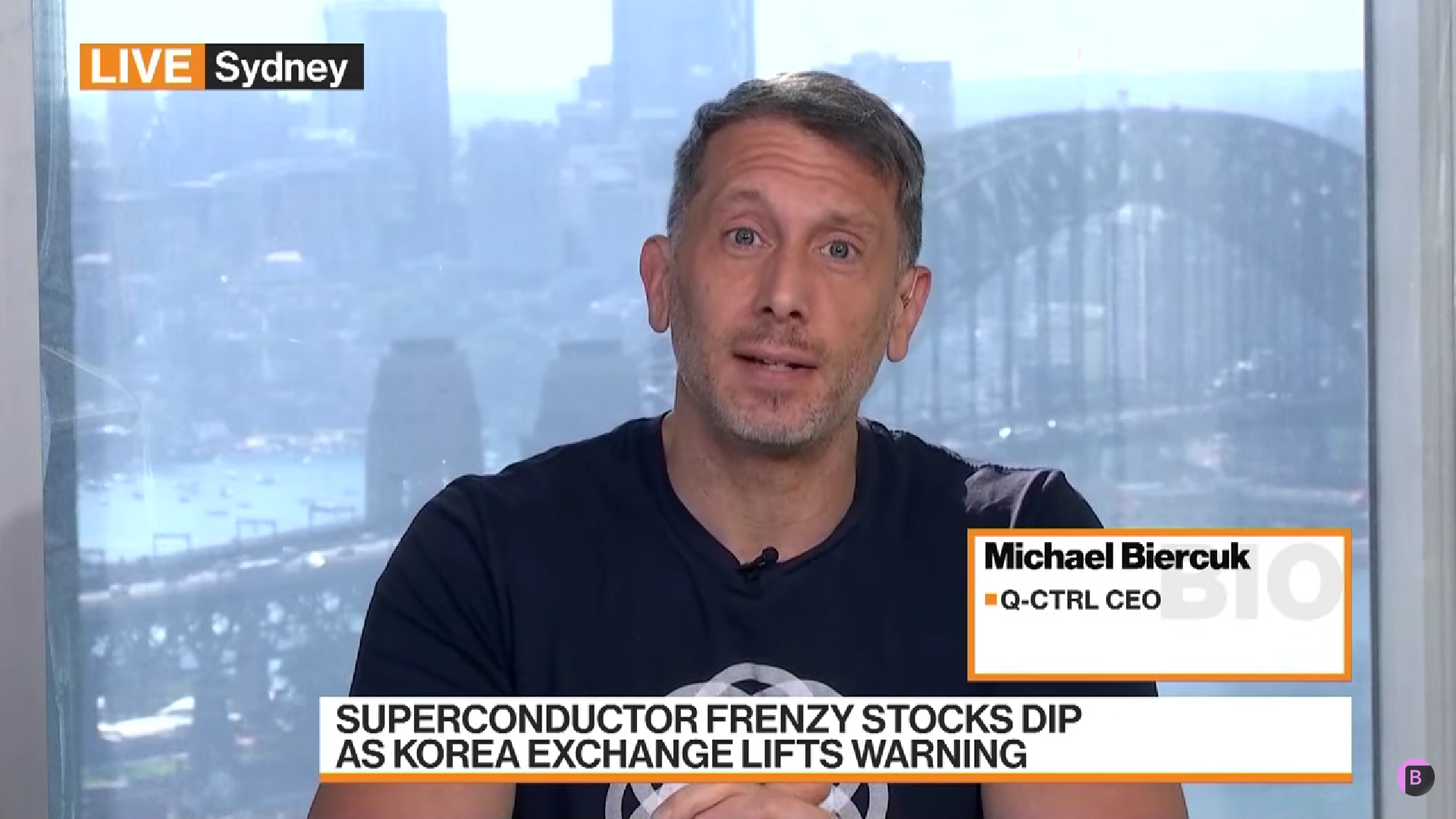Superconductivity Advancement Requires Confirmation, Says Industry Expert Michael Biercuk

In the ever-evolving landscape of quantum technology, skepticism has become a familiar companion, with scientists adopting a cautious approach toward recent assertions regarding a potential game-changing advance in superconductor technology emerging from South Korea, which The Quantum Insider covered last month. Michael Biercuk, a distinguished figure in the realm of quantum physics and the visionary behind Q-CTRL, a pioneering quantum sensing enterprise, emphasized the importance of discernment in the face of such claims in a recent exclusive interview with Bloomberg TV.
Inaccuracies
“We’ve witnessed major scientific attraction scandals, replete with grandiose affirmations that were subsequently revealed as inaccuracies,” said Biercuk, drawing upon a historical backdrop adorned with instances of scientific allure that eventually unravelled as falsehoods. “While we maintain a hopeful outlook, the scientific community is currently exercising patience, eagerly anticipating tangible evidence,” he added.
A recent dossier of research papers, unveiled last month, spotlighted the achievements of scientists at the Quantum Energy Research Centre nestled in Seoul, alongside their counterparts within the sphere of South Korean expertise. Their joint pursuit culminated in the birth of LK-99, heralded as the world’s inaugural room-temperature superconductor — an alluring prospect capable of conducting electricity under standard atmospheric pressure. Market circles and industry constituents, meanwhile, find themselves ensnared by the ensuing cocktail of exhilaration and discord that has swirled around these audacious claims.
Biercuk, in contemplation of the potential seismic implications, remarked:
“The veracity of this revelation, if substantiated, is bound to wield an indelible impact.” Elucidating further, he declared, “We’ve perpetually harboured a yearning for this precise brand of technological advancement.”
The theoretical manifestation of room-temperature superconductors unfurls a tapestry of transformative prospects across diverse domains. The sphere of medical diagnostics, as exemplified by magnetic resonance imaging (MRI), stands to undergo a paradigm shift. The traditional dependency on exorbitantly-priced and scarcely available liquid helium coolants would be alleviated, birthing a vista of substantial cost reduction. The energy landscape, too, would undergo a metamorphosis, as electricity courses through grids with unfettered efficiency, devoid of losses and impediments.
Surveying the expansive horizon that unfurls before this prospective innovation, Biercuk opined that unveiling the full scope of its impact could very well evolve into a protracted odyssey. Beyond the contours of power and medical domains, the tendrils of its influence could penetrate multifarious industries, weaving a narrative of enduring change.
Restraint Needed
“The global fraternity should exercise restraint, emphasizing the paramount significance of validation prior to surrendering to unbridled enthusiasm,” said Biercuk, in a tone tempered by prudence, articulated the need for due diligence. “The pivotal juncture resides in the independent replication and validation of these assertions by unaffiliated teams,” he then added, crystallizing the focal point of scientific prudence.
As the scientific community and industry spectators alike tread this precipice of potential transformation, one truth remains unassailable — quantum leaps of this magnitude warrant meticulous scrutiny before their veracity can be confidently embraced.
Featured image: Bloomberg TV
